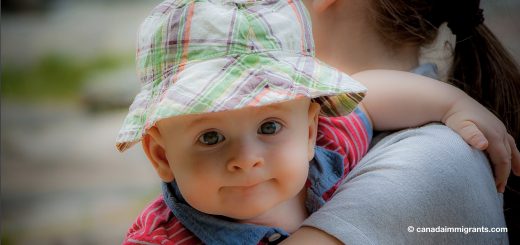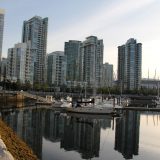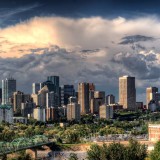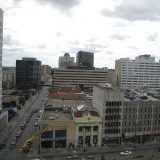Glossary

Definitions of terms related to Canada’s immigration and employment.
A
aging The process whereby the proportion of elderly increases in a population.
aging index The ratio of the number of persons aged 65 and over, to the number of persons under 15, expressed per 100.
B
business class It is an immigration class for people willing to migrate to Canada and have the experience and resources to contribute to the Canadian economy. Business immigrants include investors, entrepreneurs, and self-employed immigrants.
C
Canadian experience class It is an immigration class for a temporary foreign worker or a foreign student, to transition from temporary to permanent residence in Canada.
citizen According to the Citizenship Act, a person can acquire the Canadian citizenship either by birth or through the naturalization process.
D
demography The study of human populations. It encompasses the study of the size, structure and distribution of populations and how populations change over the time due to mortality, fertility, and migration.
The term demographics is mistakenly used as a synonym for demography, but it refers rather to selected population characteristics as used in marketing or opinion research.
E
employment discrimination It is defined as negative employment decisions based on statuses such as birthplace or origins, rather than based solely on credentials and qualifications directly related to the potential productivity of the employee. Source: Jeffrey Reitz. “Immigrant Skill Utilization in the Canadian Labour Market: Implications of Human Capital Research.” 2001.
eTA (Electronic Travel Authorization) is an entry requirement for visa-exempt foreign nationals travelling to or transiting through Canada by air. It allows Canada to screen travellers before they arrive.
express entry Since January 1st, 2015, Citizenship and Immigration Canada has managed applications of certain economic immigrant programs through an electronic system called Express Entry.
F
family class It is an immigration class for people willing to join and live permanently with close family members in Canada.
family income It is the sum of the total incomes of all members of that family.
G
government assisted refugees Applicants are selected for resettlement in the Convention refugees abroad class, and receive resettlement assistance from the federal government.
H
household A household may consist of a family group (census family) with or without other non-family persons; of two or more families sharing a dwelling; of a group of unrelated persons; or of one person living alone.
household income It is the sum of the total incomes of all members of a household 15 years of age and over.
I
Illegal hiring practices vs. ‘illegal’ immigrants Practices used by employers violating labour standards when illegally hiring undocumented workers, offering no benefits and sub-standard wages. Therefore, illegality comes into effect at the moment when these hiring practices take place.
L
labour force The labour force comprises the total of the employed (those in work) plus the unemployed (those seeking work).
labour unions are organizations that represent Canadian workers in their negotiations with employers. There are three types of unions in Canada: Craft, industrial and public sector unions. Most local unions belong to national or international unions that are organized around and industry or an occupation.
lockout is a work stoppage created by an employer.
low income cut-offs (LICO) LICOs are set according to the proportion of annual family income spent on food, shelter and clothing. A new base year for LICOs is adopted from time to time; in other words, the cutoffs are adjusted to reflect more recent available data on family spending patterns. StatsCan, 2004.
M
merchants of labour Private agents have come to dominate recruitment and deployment (of migrants) in many labour-sending nations. Source: International Institute for Labour Studies. 2005.
N
nepotism (cronyism) It is defined as appointing or hiring relatives to positions based on family status rather than on merit.
“Whether the nepotism be in favor of blood relatives, countrymen, or classmates, since they have in common the use of non-monetary considerations in deciding whether to hire, work with or buy from an individual or group.” Source: Gary S. Becker. 1957.
networking It is a common practice with which people are helped by friends or contacts to get a job or a position in Canada. The candidate for a position, who already has a connection with an organization, is more likely to receive “serious” consideration for the job. So people are often hired on the basis of whom they know instead of what they know. In other countries this practice is openly known as nepotism or cronyism.
P
pay inequity It is another form of employment discrimination against immigrants. This occurs when immigrants have full access to jobs involving significant skill and responsibility, so their skills are fully utilized, but they are simply paid less than native-born workers doing the same or similar jobs.
Source: Jeffrey Reitz. 2001.
Note: Pay inequity not only constitutes a failure to provide equal pay for work of equal value, but it also generates higher rates of surplus value.
permanent resident A person with permanent resident status is a landed immigrant, or an immigrant who has settled permanently in Canada, but has not acquired Canadian citizenship.
poverty rate Poverty rate or incidence of poverty refers to the proportion of the population living in households with incomes below the LICO. Source: Canadian Council on Social Development, Urban poverty in Canada. 2000.
Note: StatsCan has published a set of measures called the low income cutoffs, and consistently emphasized that these are quite different from measures of poverty; however, LICO measures are relative indicators of low income.
privately sponsored refugees Applicants are selected for resettlement in the Convention refugees abroad class, and are privately sponsored by organizations, individuals or groups of individuals.
provincial nominee It is an immigration class for people willing to move to Canada and do not have to meet the usual selection criteria, but they must pass health and security requirements. Most provinces have their nominee program that allows them to select potential immigrants to fill specific provincial labour market needs.
R
racism A set of beliefs which asserts the natural superiority of one racial group over another, at the individual but also the institutional level. In one sense, racism refers to the belief that biology rather than culture is the primary determinant of group attitudes and actions. Racism goes beyond ideology; it involves discriminatory practices that protect and maintain the position of certain groups and sustain the inferior position of others. (www.canadaimmigrants.com 2002)
refugee Convention Refugee: Is defined as a person outside of his country of nationality who is unable or unwilling to return because of persecution or a well-founded fear of persecution on account of race, religion, nationality, membership in a particular social group, or political opinion.
Designated Classes: Are persons in refugee-like situations who are in need of resettlement, even though they may not meet the strict definition of convention refugee.
regulatory body is an organization that sets the standards and practices of a profession.
regulated occupation is an occupation that requires a license from or a registration by a professional association or professional regulatory organization in Canada. It may take weeks, months or years to register with a professional regulatory organization or to get the certification you need to work in your occupation.
returning residents Those residents in Canada that are not Canadian citizens and are outside Canada for frequent or extended visits. These people should apply for a returning resident permit.
S
skilled worker Immigration class for foreign professionals. Applicants are subject to a point system, which considers age, education, ability to speak English and/or French, skills, and work experience needed in Canada’s labour market.
strike is a work stoppage created by workers.
systemic racism It is a specific type of racism. It is a differential treatment given to particular racial groups through apparently neutral rules, policies and procedures. It is reinforced by institutional practices and power resulting in unfair treatment of particular racial groups. It usually deals with employment. For example, hiring procedures or entrance requirements may have the effect of excluding various racial groups particularly from higher positions. Also referred to as ‘institutional’ racism.
U
underemployment The situation where workers cannot obtain full-time employment or who are working at jobs for which they are overqualified. Underemployment has also been defined as “involuntary part-time” employment, or employment of a person on a part-time basis when full-time work is desired.
under-utilization of immigrant skills (Brain Waste) Defined as any employment of immigrants in work below a level of skill at which they could function as effectively as native-born Canadians. It also represents one form of employment discrimination based on immigrant status or immigrant origins. Source: Jeffrey Reitz. 2001.
V
visible minorities The Canadian Employment Equity Act defines visible minorities as “persons, other than Aboriginal peoples, who are non-Caucasian in race or non-white in color.”
Note: StatsCan considers that the visible minority population includes the following groups: Chinese, South Asian (East Indian, Pakistani, Sri Lankan, etc.); Black, Filipino, Latin American, Southeast Asian (Cambodian, Indonesian, Laotian, Vietnamese, etc.); Arab, West Asian (Afghan, Iranian, etc.); Japanese, Korean, and Pacific Islander.
W
workforce It is defined as employed persons (employees and self-employed), who can be working either full-time or part-time.






